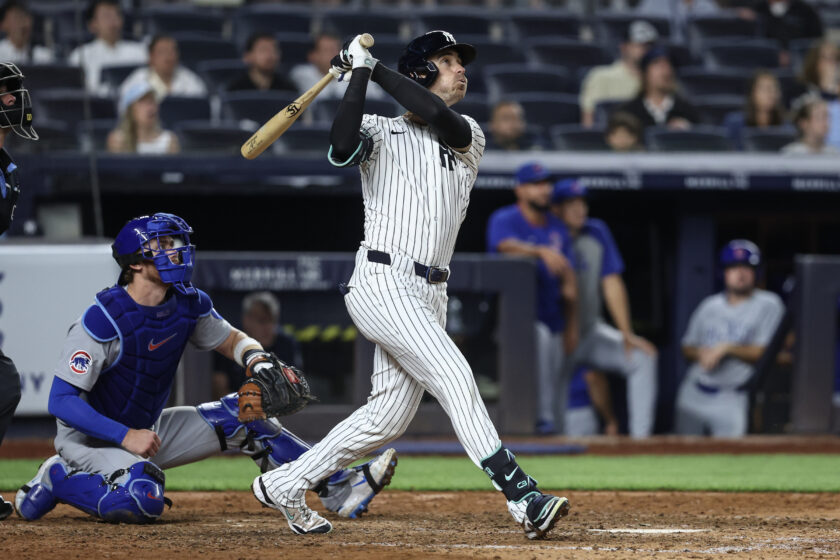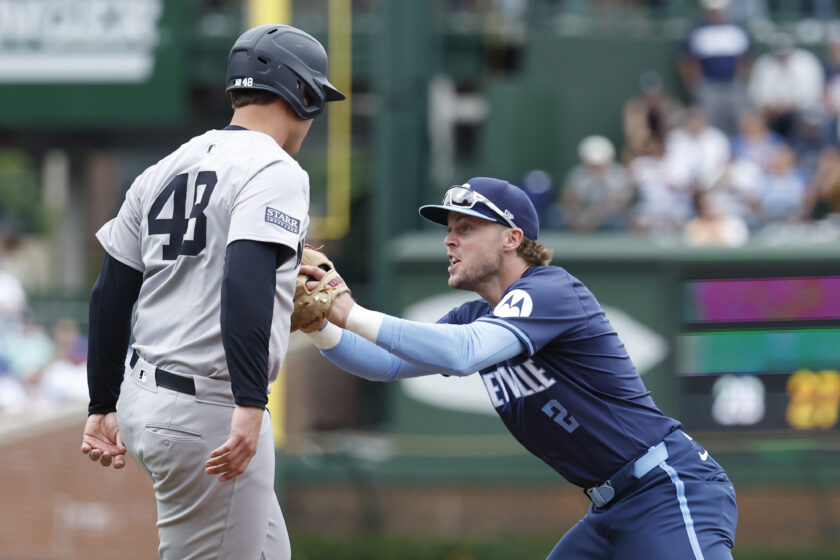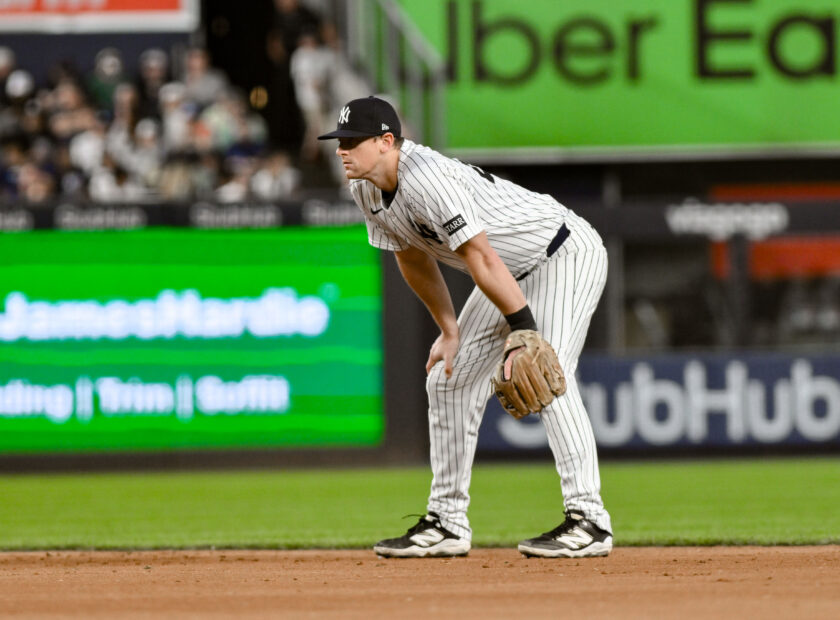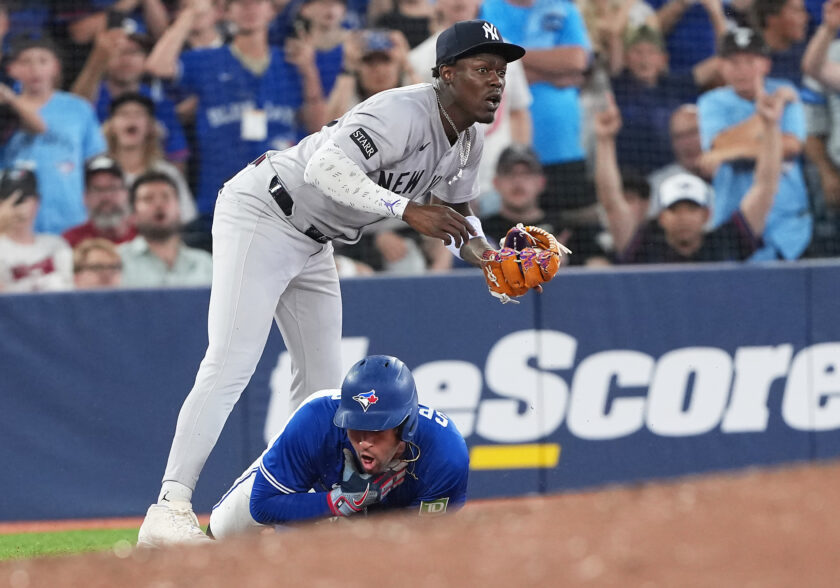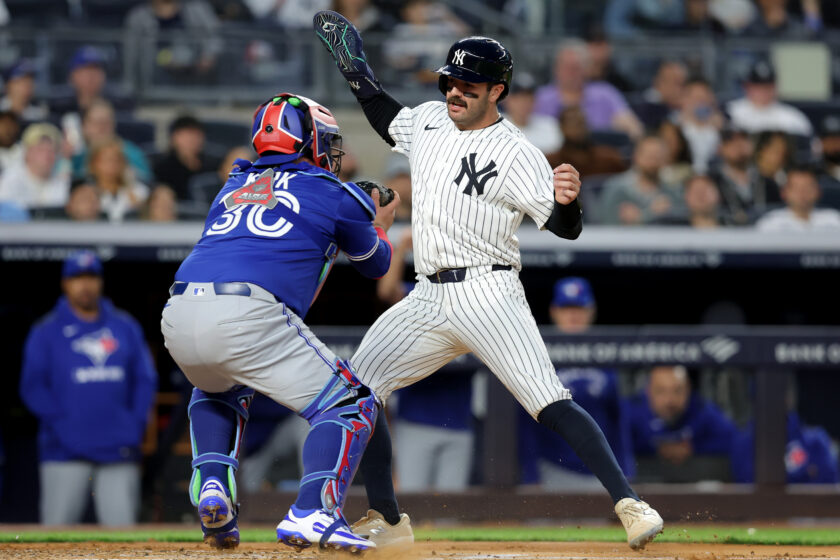New York Yankees Must Revamp Top Of The Order In 2017
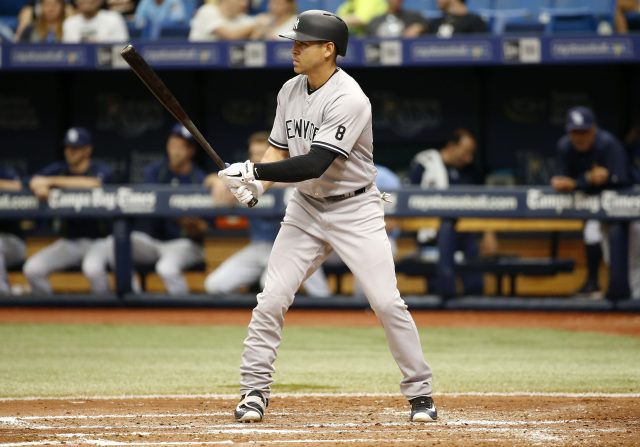
Fans maintain the common misconception that the New York Yankees lack necessary catalysts at the top. What they fail to realize is that they exist, only in a thoroughly mismanaged manner.
Prior to the 2014 campaign, when the New York Yankees went on their half-billion-dollar spending spree, there was excitement regarding the potential electricity in their everyday lineup. Day in and day out, manager Joe Girardi could pencil in Jacoby Ellsbury and Brett Gardner at the top, creating a tandem few teams in baseball could silence.
The two men destined to make a profound impact as the best one-two punch in the game possessed numerous desirable qualities. Not only were they gold glove caliber outfielders, but they had the rare ability to run and hit for both average and power.
From the get-go, they lived up to the hype. The first month of a much-anticipated campaign featured the lethal nature many had hoped for.
Working their way on base, swiping bags, and driving each other in, all while serving as catalysts for the big boppers in the middle of the order.
[sc name=”Yankees Link Related” link=”elitesportsny.com/2016/11/03/greg-holland-should-be-on-the-new-york-yankees-radar/” text=”Greg Holland Should Be On The Yankees’ Radar” ]Unfortunately for New York, the effectiveness of the duo soon subsided. Ellsbury severely came up short of expectations and Gardner returned to his streaky, slightly above average ways.
However, despite having a $153-million man who has failed to hit above .271 in his three seasons in the Bronx, the Yanks continue to run the 2013 world champion out there as the leadoff guy. Even though the two keys to the ignition have not swiped north of 21 bags over the past two years, the Ellsbury-Gardner top of the lineup remains favorable.
Why? It looks good on paper. The Yankees continue with their disillusioned hope that the speedsters in left and center will finally fulfill their utmost potential.
As a result, a potentially dangerous lineup is dragged down over the course of a 162-game schedule. There is no spark and, therefore, no daylight when it comes to run-scoring opportunities.[sc name=”Yankees Center Right” ]
Sure, acquiring talent would be a logical answer, even considering the fact that mainstays eclipsing the talent of an Ellsbury or Gardner are difficult to come by. But that is for the close-minded fans or the ones who do not truly realize the potency of the current 25-man roster.
The problem remains in the wrong usage of certain pieces, a trend which must change in order for 2017 — a year with loads of promise — to breathe legitimacy.
As every baseball fan witnessed in the World Series, money does not buy meaningfulness. Simply due to underperformance and a lack of value, Jason Heyward was as irrelevant as irrelevant could be on the biggest stage of the sport.
A daunting paycheck should not overwhelm New York, and neither should a name. Jacoby Ellsbury is an overrated center fielder, leadoff hitter, and base-stealer. Given the fact that his on-base percentage has not exceeded .330 since 2012, you can make the argument that the organization’s judgment is impaired.
With a candidate like Didi Gregorius — who is coming off a tremendous breakout season — looming, the option to drop Ellsbury in the order is evident. Not only does the 26-year-old use his speed when called upon, but he is an exceptional two-strike situational hitter with serious run-producing capabilities. This is not to mention his ability to play long ball at a rather frequent clip, easily getting an offense jumpstarted should he be the first man up in the opening frame.
[sc name=”Yankees Center 2″ ]Just like Ellsbury is misplaced, Brett Gardner is the opposite of a number two hitter. The 33-year-old veteran is awful when it comes to the hit-and-run, he often weighs down the lineup due to incredibly prolonged slumps, and he strikes out far too often (502 times since the start of 2013).
Stacking poor situational lefties back-to-back in two of the most crucial spots in the order is as nonsensical as it gets. In doing so, you are making an opposing skipper’s life substantially easier. Lineup spacing is desperately needed, and the Yankees should have no trouble creating it.[sc name=”Twitter” ]
Starlin Castro is the ideal choice to slot at number two in the order. Should the free-swinger cut down on his endeavors outside of the strike zone, he will be more than capable of sustaining and furthering rallies.
Run production rather than sheer efficiency is what’s required from that spot in the lineup. Playing to the tune of a .734 OPS with 70 RBIs — eight homers, 24 RBIs in August — in 2016, the second baseman got better and better as the season moved along.
Should Gregorius lead things off, Castro is the guy to place behind him. In any other circumstance, he is better served in the 5-7 portion of the lineup card.
Letdown, ineffectiveness, you name it. Ellsbury and Gardner do not cut it anymore for a Yankee team that seeks an AL East title in 2017. Sometimes all it takes is a new look.
What Gregorius and Castro were able to do this past season was a ray of sunshine on a dark — and ultimately sinking — ship. Perhaps the anticipated 2014 lethal-ness will surface three years later than expected, with different faces leading the way.
[sc name=”Berbari Footer” ] [sc name=”Yankees Link Next” link=”elitesportsny.com/2016/11/03/new-york-yankees-lessons-2016-world-series/” text=”Lessons The Yankees Should Learn From The 2016 World Series” ]
